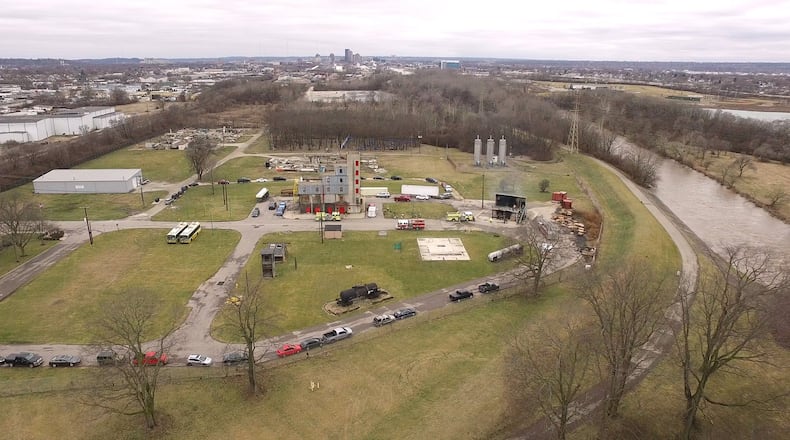Several years ago, officials determined PFAS from Wright-Patterson Air Force Base was migrating into the wellfield. But there were questions as to whether the chemicals from the city’s training center also had contaminated the wellfield.
Exposure to per- and polyfluoroalkyl substances ― or PFAS ― can affect pregnancy, increase cholesterol levels and cause some forms of cancer, according to the U.S. Centers for Disease Control and Prevention. Infants and children, pregnant and nursing women, and those who have a compromised immune system may be at a higher risk of health effects.
Dayton recently filed a lawsuit accusing the base and the Department of Defense of violating several environmental laws and failing to stop water contaminated with PFAS from migrating into the city’s wellfield. The city seeks damages of up to $300 million. The Air Force has denied those allegations.
In 2017, the city tested the groundwater near its training center for PFAS and detected some levels of the contaminants. It did not report the findings to the Ohio Environmental Protection Agency until nearly a year later.
Prior to the city sharing that data, the Ohio EPA had focused on Wright-Patt, which previously used firefighting foam at its fire training center on base, as the only potential source of contamination. So it directed the base in a Notice of Violation to develop an action plan. But based on Dayton’s sampling result, it appeared that the city’s training center might also be a contamination source, the state agency said in a letter to the city dated Feb. 21, 2018.
“Dayton has always proactively addressed potential threats to its drinking water system, and, while I am disappointed that you did not share this information with Ohio EPA until now, I am confident that you will take similar measures to address this situation,” wrote Craig Butler, then the Ohio EPA director. “It is more critical than ever that Dayton be more forthright with sampling results and data as this investigation progresses to ensure Dayton’s drinking water is protected.”
The Ohio EPA also directed Dayton to take steps to ensure its drinking water remains safe, including:
- Evaluate immediate short-term actions it can implement to prevent existing ground water contamination from the Fire Training Center from affecting wells currently operating at the city’s Mad River Wellfield.
- Sample its treated water from the nearby Ottawa Water Treatment Plant for PFAS at least monthly.
- If PFAS contamination above 70 ppt is detected in monitoring wells between the Fire Training Center and currently operating production wells, the city must immediately notify the Ohio EPA and begin sampling certain production wells.
As part of Ohio EPA’s directives, the city did extensive groundwater sampling, research and modeling in coordination with the state agency and Wright-Patt. The results “conclusively” showed Dayton’s training center is geologically isolated from the active Mad River Wellfield, Powell said, and is not a source of contamination for the active wellfield or the city’s nearby Ottawa Water Treatment Plant.
The fire training center’s elevation is lower than the active Mad River Wellfield, he said.
“It is not possible for surface water ― or groundwater ― to travel uphill,” Powell explained. “It is not possible for PFAS molecules to travel upstream from the Fire Training Center to the Mad River Wellfield due to gravity flow.”
The city’s explanation of why PFAS at its training center doesn’t migrate to the wellfield is unclear, said Abinash Agrawal, a groundwater remediation expert and an earth and environmental sciences professor at Wright State University.
Firefighting foam was released on the ground surface, and impacting the shallow and deep zones, he said. Based on an 2018 EPA map, the measured PFAS concentration in multiple Fire Training Center wells is higher at intermediate depth (PFAS concentration ranges from 500 to 1,500 ppt at 30-50 feet depth) in comparison to the deeper zone (50-300 ppt PFAS at 55-75 feet).
In addition, high capacity water production wells are known to capture or pull water from large areas, Agrawal said, including deeper intervals.
The Ohio EPA agreed with the city’s findings, it wrote in a follow-up letter to Powell dated Feb. 25, 2019. However, there were some data gaps that needed to be addressed, the agency wrote, adding that the city inadequately evaluated two wells that are much closer to the Fire Training Center. Powell said the city has since filled in those gaps and the Ohio EPA accepted the findings.
The state agency agreed, saying Dayton has taken all the actions it recently recommended.
About the Author
